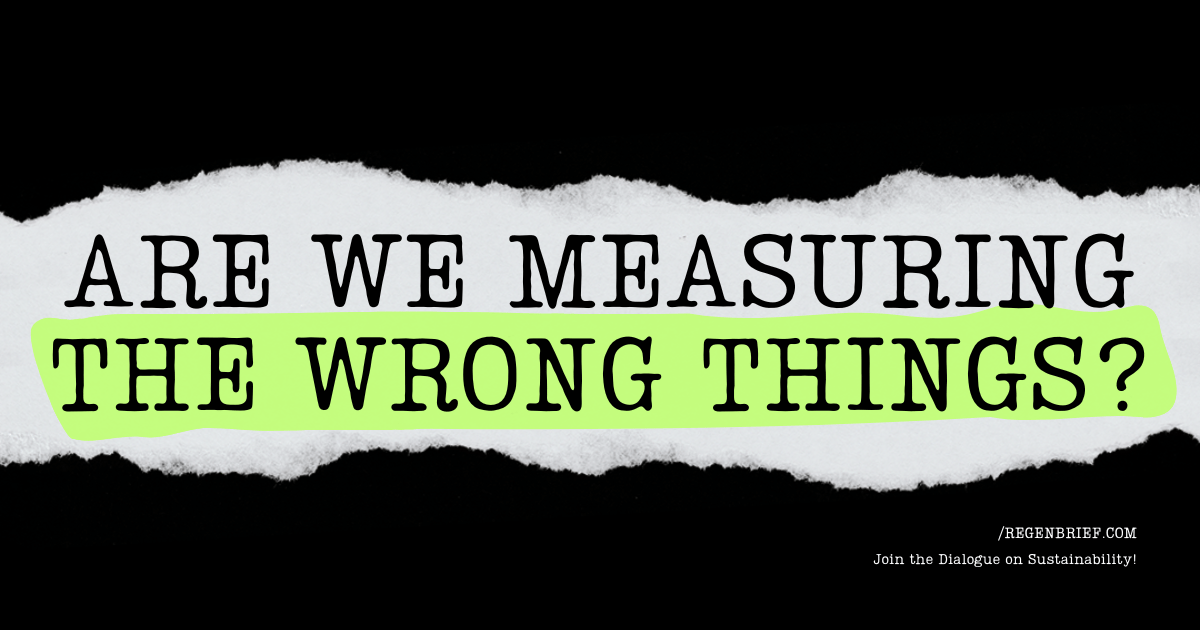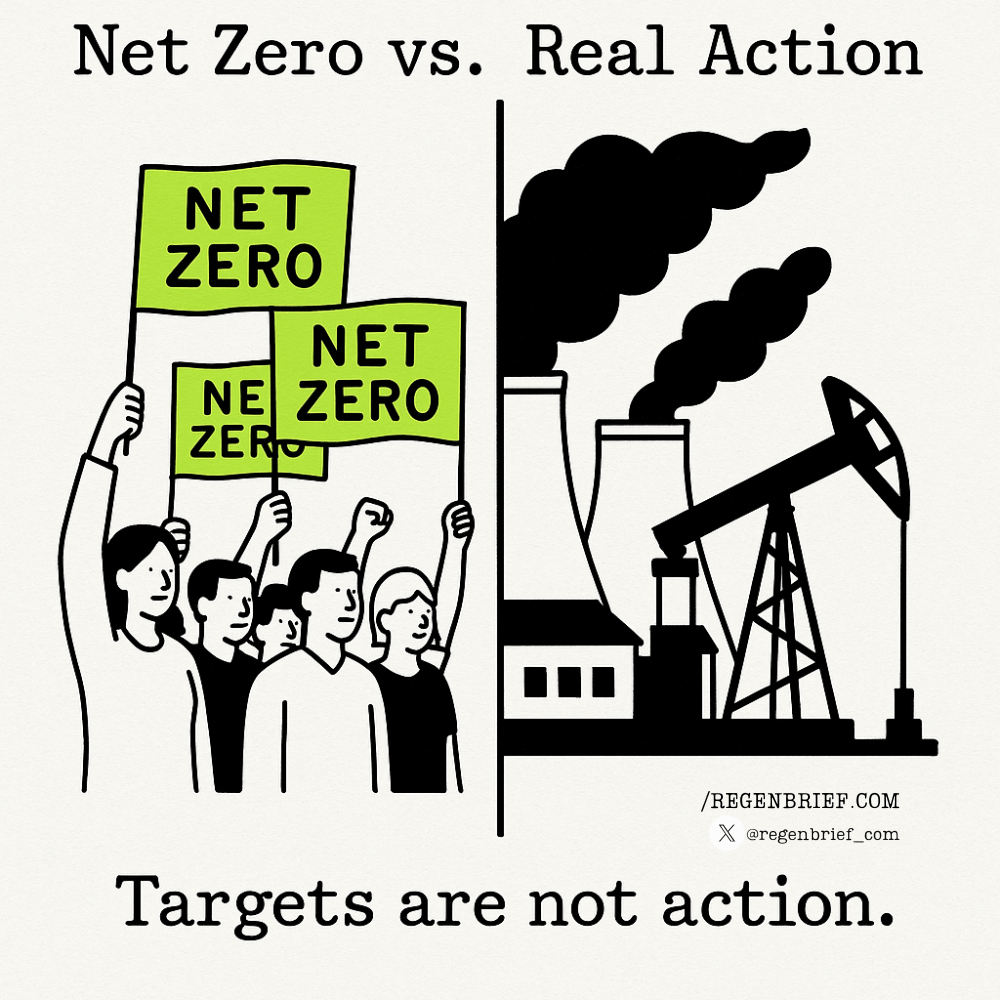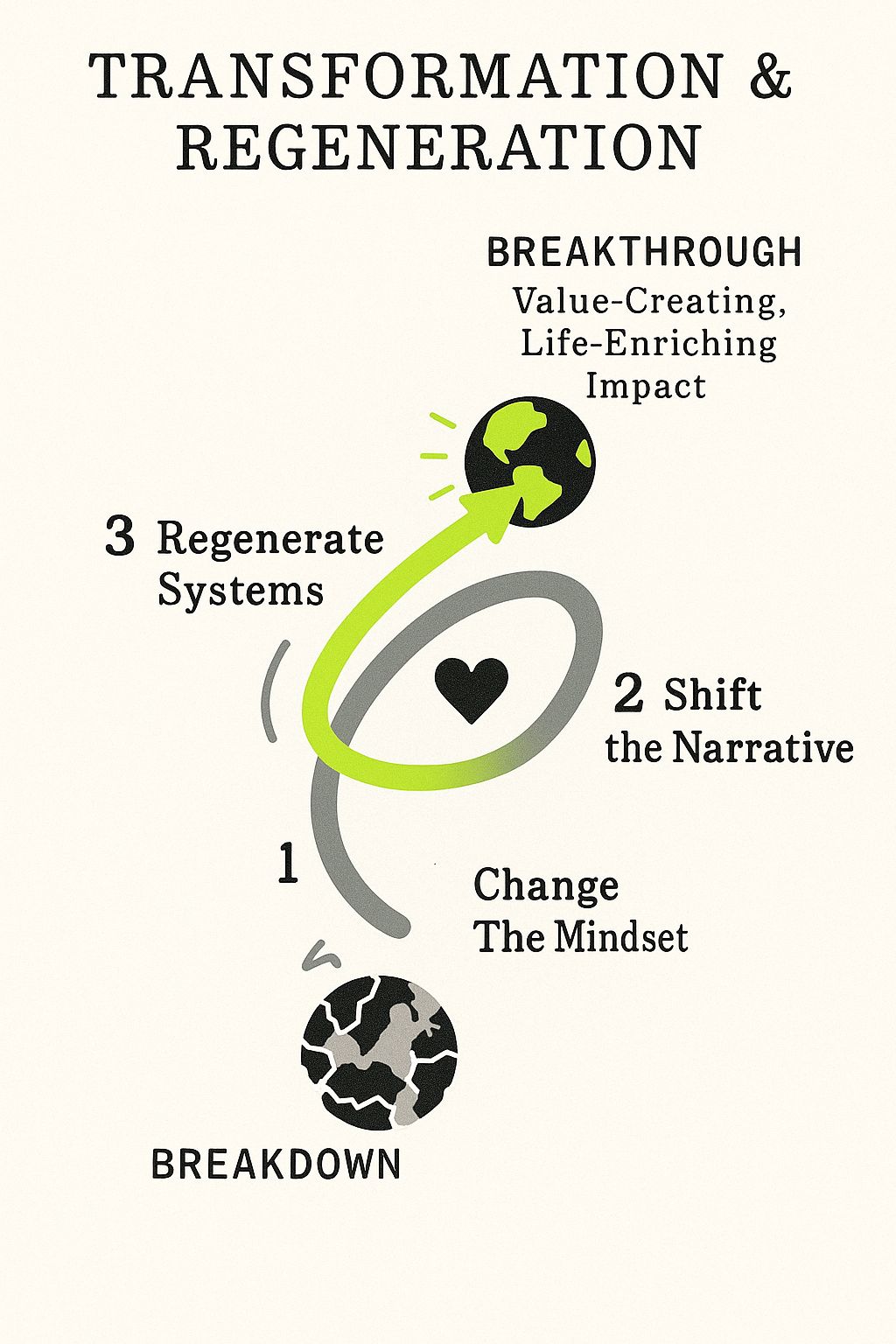- The Regenerative Brief
- Posts
- Are We Measuring the Wrong Things?
Are We Measuring the Wrong Things?
Why Net Zero Targets Alone Won’t Save Us

“We cannot solve our problems with the same thinking we used when we created them.”
Dear RegenBrief Reader,
We love simple stories.
A world where we emit carbon today…
…and plant trees or invent gadgets tomorrow to cancel it out.
It feels neat. It feels possible. It feels like hope.
But it’s a dangerous illusion.
The truth? Net Zero targets — by themselves — won’t stop climate change.
In fact, they may be making things worse by letting us believe we’re doing enough.
Let’s unpack why!
The Problem with Numbers That Look Good
Net Zero targets are everywhere — but emissions aren’t falling fast enough.
The world’s top 1,000 companies have made net-zero pledges.
But most rely on:
Meanwhile, global emissions hit a record high in 2024.
We’re winning on paper. Losing in reality.

The Carbon Budget is Almost Gone
Science is simple here:
We have a set amount of CO₂ we can emit before we blow past 1.5°C of warming.
At current rates, we’ll hit that limit in about 6 years.
After that?
The damage — floods, fires, food shortages — becomes locked in.
2050 is too late.
We need action this decade.
Offsets: The Magical Thinking Trap
Here’s how it works:
Pollute today.
Pay someone else to plant trees, or avoid emissions elsewhere.
Call yourself "net zero."
It sounds good.
But many offsets are unreliable, delayed or impossible to verify.
Worse?
They often let rich companies avoid the hard work of real change.
As one critic joked:
"If only I could lose weight by paying someone else to eat less."
The Global Justice Gap
Let’s be honest.
The countries and companies most responsible for the crisis…
…are often the ones benefiting from cheap offsets.
Meanwhile, poorer countries?
They’re asked to cut emissions too — but without the same resources or technology.
Real climate action means:
✅ The biggest polluters move first and fastest.
✅ Everyone gets the tools they need for a fair transition.
Talk is Cheap — Policies Matter
Over 100 countries have net zero targets.
But only a handful have real plans, laws or short-term milestones.
Many are still building new coal plants and drilling for oil.
It’s like signing up for a marathon… and then sitting on the couch for a decade.
Targets are good.
Targets without action are useless.
The Hard Truth (And the Real Solution)
Net zero is not enough.
Not by itself.
Not when it’s just words.
Here’s what we actually need:
✅ Slash emissions by nearly half by 2030.
✅ Phase out fossil fuels fast.
✅ Use offsets only for the last, hardest bits — not as a license to pollute.
✅ Make plans legally binding.
✅ Lead with fairness — rich countries do more, and sooner.
Sustainability metrics often reward less harm, not more good.
But a 20% emissions cut in a business model that still pollutes is still… pollution.
Regeneration flips the script:
It measures restoration, resilience, and circular value
It prioritizes absolute reductions, not just efficiency
It demands impact integrity, not marketing optics
You can’t offset your way to planetary stability.

U Image based on: BEAM Consulting & Design
Case Study: Extractive vs. Regenerative
SHEIN is making strides in ESG oversight and transparency, setting emissions reduction targets and increasing supply chain accountability, but its business model continues to drive high emissions and faces criticism for slow progress in addressing the core issues of fast fashion. | Patagonia leads with transformative, regenerative practices and industry advocacy, but the scalability of its model across the sector is uncertain. |
Shell demonstrates ESG reporting and incremental improvements in operational emissions, but these are undermined by continued fossil fuel expansion and weakened climate targets, which are not Paris-aligned. | Moeve (formerly Cepsa) is positioning itself as a leader in the energy transition with a comprehensive sustainability plan, but the impact will depend on the ambition and execution of its commitments. |
Your Move
Ask better questions:
Are we reducing total resource consumption or just intensity per unit?
Are we shifting our value model from extraction to regeneration?
Is our ESG report telling the truth — or just telling a story?
If your impact report looks good but your systems haven’t changed, it’s time to go deeper.
The Choice is Now
The future isn’t 2050.
The future is being decided this year, this month, today.
We don’t need more promises.
We need more action.
Real, fast, and fair.
Quick Signals from the Field
📊 BlackRock is pivoting toward regenerative investing with new funds focused on natural capital, including the BGF Circular Economy Fund. Their analysts forecast a fundamental repricing of environmental assets as climate risks rise.
🏩 Amsterdam has embedded Doughnut Economics into its city planning since 2020, influencing circular building policies and participatory budgeting. Its "City Portrait" became a global reference point for regenerative urban design.
🌱 Brazil launched the Brazil Climate and Ecological Transformation Platform (BIP) to mobilize billions in green investment. It recently supported Atlas Agro’s green fertilizer plant, aimed at decarbonizing nitrogen fertilizer production.
🌳 Ecological corridors such as the Capivara-Confusões and Central Amazon Corridor are restoring connectivity across fragmented forests, enhancing biodiversity and carbon sinks.
Let Us Help You Lead the Shift
Whether you're in strategy, ESG reporting, operations or innovation—
This is your moment to shape not just a better business, but a better future.
Curious where regeneration fits into your model?
Let’s explore the possibilities together.
This is more than sustainability.
This is life-centered design.
This is regeneration.